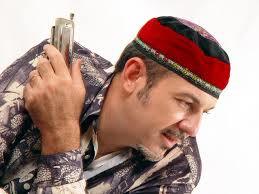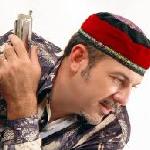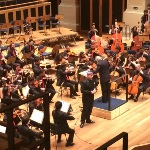The harmonica (mouth organ) was invented in 1821 by the German clock maker, Christian Friedrich Ludwig Buschmann, and quickly became popular among the masses due to its simplicity, conveniently small size, inexpensive cost and pleasing sound.
Despite its popularity among the working class people, the harmonica — for more than one hundred years after its invention — remained little more than a primitive diatonic folk instrument; it could play in only one key at a time.
The chromatic harmonica, introduced in the 1920's and championed in the 1930's by the virtuoso player Larry Adler was the single most significant improvement in the evolution of the instrument; it directly led to the harmonica's acceptance and use by classical composers. During one of Adler's concerts, Ralph Vaughan Williams (1872-1958) was present in the audience. After the performance ended, Adler asked the celebrated English composer to write a piece for him; thus was born the beautiful Romance in Db (1952) for harmonica, piano and string orchestra.
Check out the Heitor Villa-Lobos - Concerto for Harmonica and Orchestra performed by Jose Staneck and the Caracas Youth Symphony Orchestra.
article posted by:Fernando Alves, Acalanto Produções Musicais





